If you love the mysterious and misunderstood, these dragonfish facts are definitely for you. The dragonfish is an intriguing creature. With its ethereal appearance and surreal features, it’s not hard to see why this fish has captured people’s imagination since its discovery. Because it lives in the twilight zone of oceans worldwide, it remains a bit of a mystery. Here are ten incredible facts about the dragonfish that will leave you spellbound.
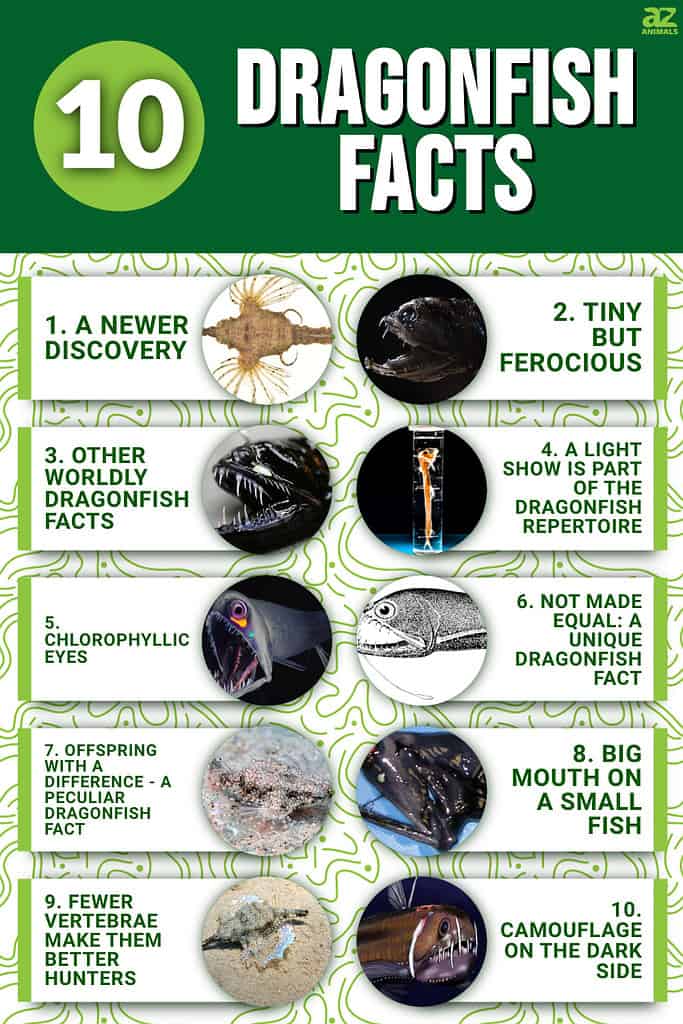
1. A Newer Discovery
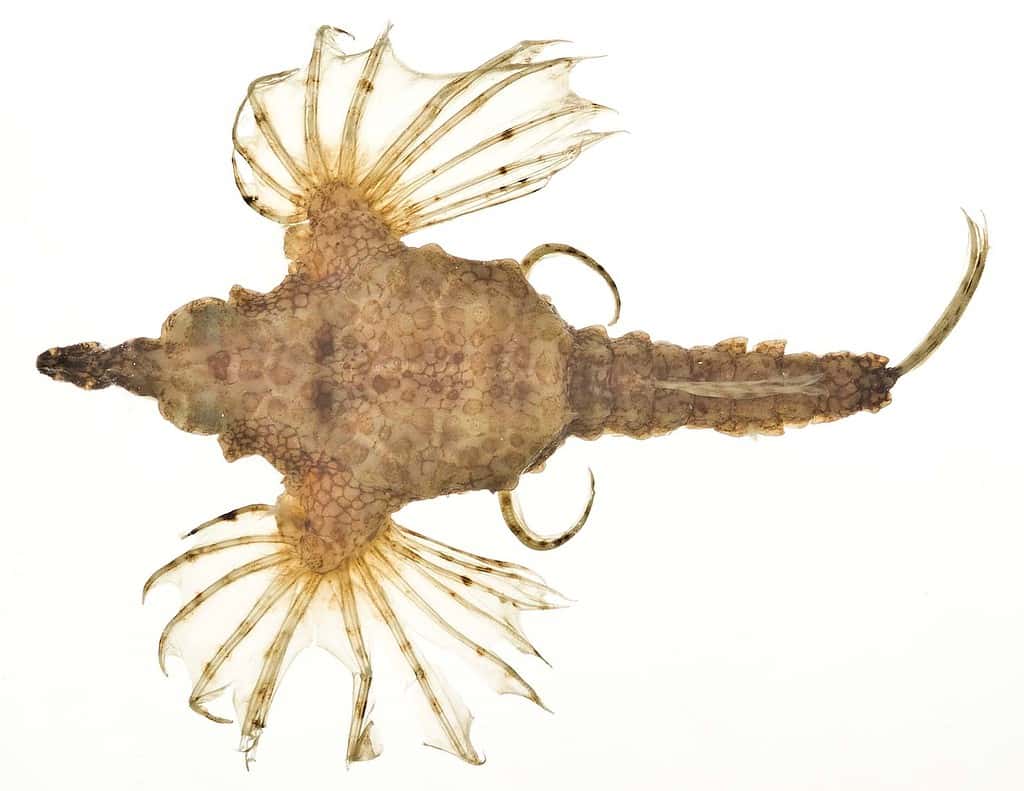
The first recorded sighting of a dragonfish was on November 12, 1909, off the coast of Ireland.
©Sandra Raredon/Smithsonian Institution / Public Domain – License
The dragonfish is a relatively recent discovery to the scientific community. The first recorded sighting of this strange creature was on November 12, 1909, when a group of Irish fishermen spotted something unusual in their nets. Upon closer inspection, they discovered a fish with long, sharp teeth and barbed fins. They named it ‘dragonfish’ and brought it back to shore for further study.
Although sightings of dragonfish have occurred worldwide in recent times, we still know very little about this elusive creature. Scientists believe the dragonfish is a deep-sea dwelling species since all recorded sightings have occurred in waters at least 1640 feet, or 500 meters, deep. Scientists are hopeful that further research will shed light on this fascinating creature.
2. Tiny But Ferocious

A typical dragonfish fact is that they live at depths of 1640 feet but are tiny at about 6 inches, and ferocious.
©UC San Diego Jacobs School of Engineering / CC BY 2.0 / flickr – License
Dragonfish are tiny creatures, an average of 6 inches, but ferocious predators in deep-sea waters worldwide. The dragonfish is a voracious eater known to devour fish that are more than half its size. While dragonfish are fearsome predators, they are also essential to the ocean food chain. For instance, red founder fish enjoy eating a dragonfish or two. But despite their fierce appearance, these tiny but ferocious predators of the deep are not a threat to humans.
3. Other Worldly Dragonfish Facts
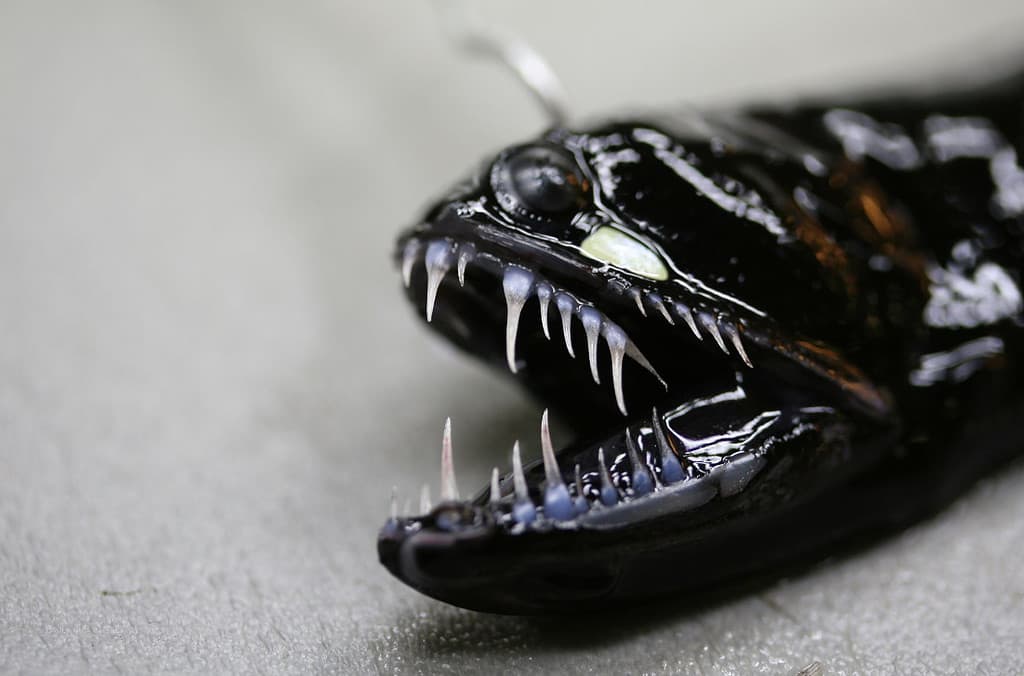
Some species of dragonfish have enormous transparent teeth that protrude from their jaws.
©Naturalis Biodiversity Center / CC0 – License
These small fish are genuinely unique and otherworldly creatures. One species of barbeled dragonfish is known scientifically as Grammatostomias flagellibarba. They have enormous transparent teeth that protrude from their jaws. Dragonfish are dark-colored, with small eyes and a long barbel (whisker-like appendage) below their mouths. Their bodies are slender and eel-like and have long, sickle-shaped fins. The next time you’re looking for an otherworldly creature to fascinate you, keep the dragonfish in mind! It may look intimidating, but it is a rather delicate creature.
4. A Light Show Is Part of the Dragonfish Repertoire
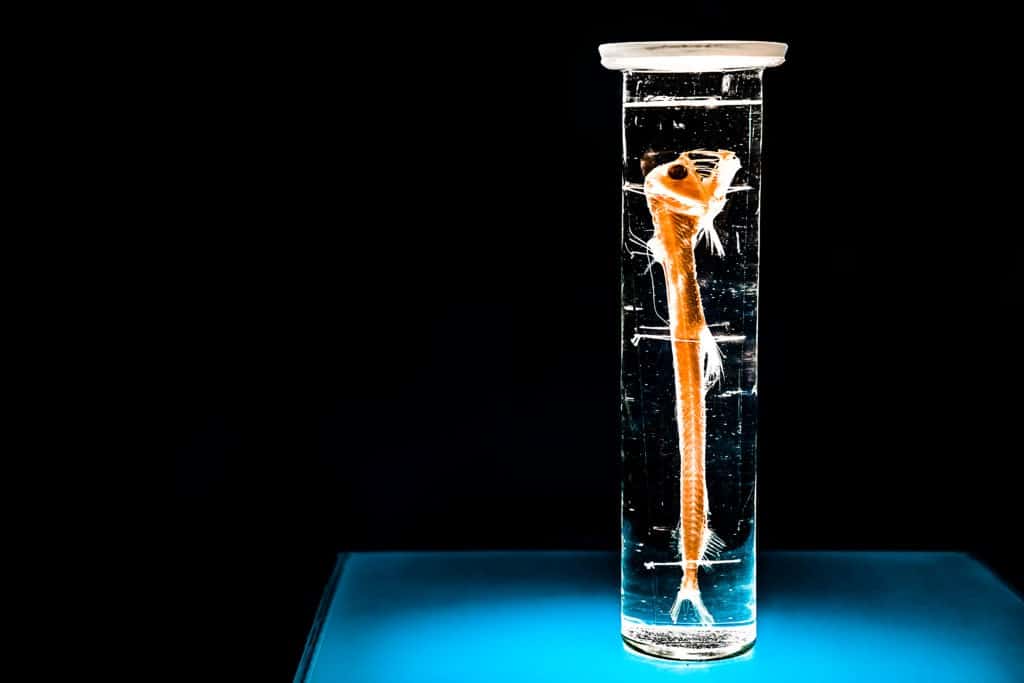
Bioluminescence to produce light and chlorophyllic eyes are just two amazing dragonfish facts.
©OZGIOUN SAMPRI/Shutterstock.com
Deep below the ocean’s surface, in a world where sunlight never reaches, dragonfish can produce light through bioluminescence. Bioluminescence is a chemical process and in dragonfish it illuminates the barbel under their chin which they use to attract prey and communicate with other dragonfish. Light-producing cells cover the fish’s body, which help it blend in with the faint light emitted by other organisms in its depths. So, dragonfish facts include the fascinating power to light up their dark ocean world.
5. Chlorophyllic Eyes
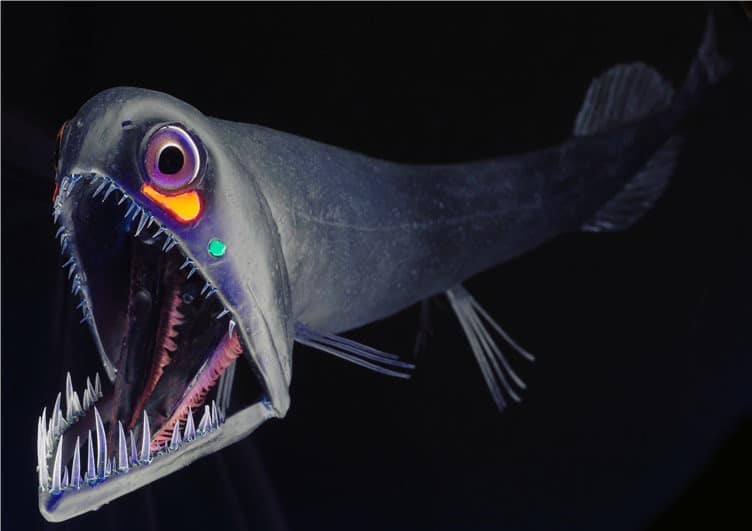
Dragonfish have eyes that are full of chlorophyll, allowing them to see in very dim conditions.
©ESRI, Dr. Beinart, Tracey T. Sutton/CCBYSA4.0 – License
The dragonfish is a fascinating creature that has adapted to its deep, dark environment in some unique ways. Most fish have eyes that are sensitive to light, but dragonfish have eyes that are full of chlorophyll. The chlorophyll provides an aptitude for gathering every bit of available light, allowing it to see in the dimest conditions. Scientists believe this adaptation allows the dragonfish to survive and thrive in its deep-sea environment.
6. Not Made Equal: A Unique Dragonfish Fact
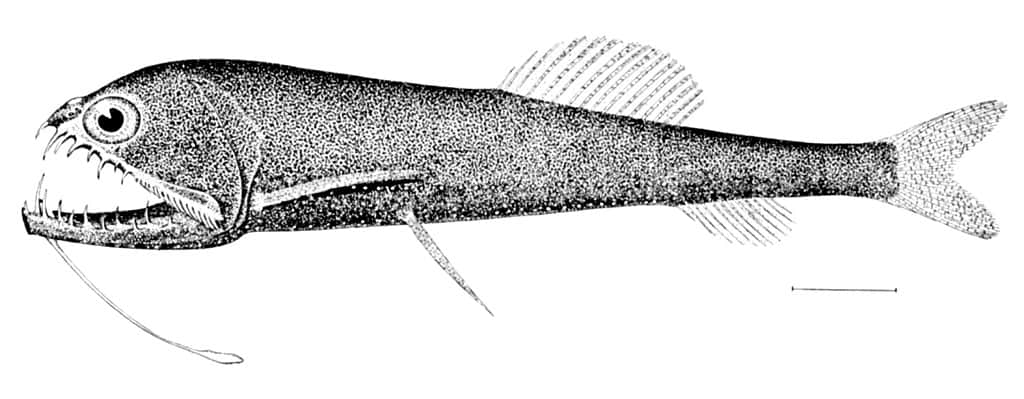
The dragonfish males are known to be about one-tenth the size of the females. The females also have a barbel on their chin.
©G. Brown Goode and Tarleton H. Bean, published 1896 / Public Domain
The males and females of the dragonfish species are certainly not made equal. For starters, the male is only a tenth of the size of the female. He also has neither teeth, a barbel, nor a working gut. On the other hand, the female is a fierce predator with large teeth and a barbel that helps her sense prey. She also has a fully functioning digestive system.
So why do dragonfish have such drastic differences between the sexes? It’s all about reproduction. The female needs to be larger and more robust to protect her eggs. At the same time, the male is only responsible for fertilizing them.
7. Offspring With a Difference – A Peculiar Dragonfish Fact

Some species of dragonfish have dark skin that absorbs up to 99.5% of light, making them virtually invisible in the water, while other species have lighter coloration.
©orlandin/Shutterstock.com
Barbeled dragonfish go through a tremendous transformation as they develop from larvae to adults. When they are first born, they are tiny and translucent, with long, spindly eye stalks. They look nothing like their adult counterparts, and their sex is unknown until complete transformation. As they grow, they begin to change shape. Their bodies become more elongated, and their fins shorter and more compact. Their skin also becomes darker, turning from translucent to a deep blue or black. By adulthood, they are fully-fledged dragonfish.
Despite this dramatic transformation, dragonfish are not genuine metamorphic animals. This quality is absent because they do not undergo a complete change in form – their basic body structure remains the same throughout their lives. Nevertheless, their transformation from larvae to adults is still an impressive feat of nature.
8. Big Mouth on a Small Fish

The stoplight loosejaw (Malacosteus), a type of dragonfish, has an unhinged jaw and lights under the eyes.
©NOAA Northeast Fisheries Science Center/Public Domain – License
A distinctive feature of the dragonfish is its enormous mouth. The dragonfish is a fearsome predator whose large mouth plays a significant role in its hunting strategy. The fish’s jaws come with an amazing and unique hinge that allows them to open their mouths to over 100 degrees. This adaption enables them to swallow prey over 50% of their size quickly. Thus, the dragonfish’s giant mouth is a crucial adaptation that allows it to be a successful predator.
9. Fewer Vertebrae Make Them Better Hunters
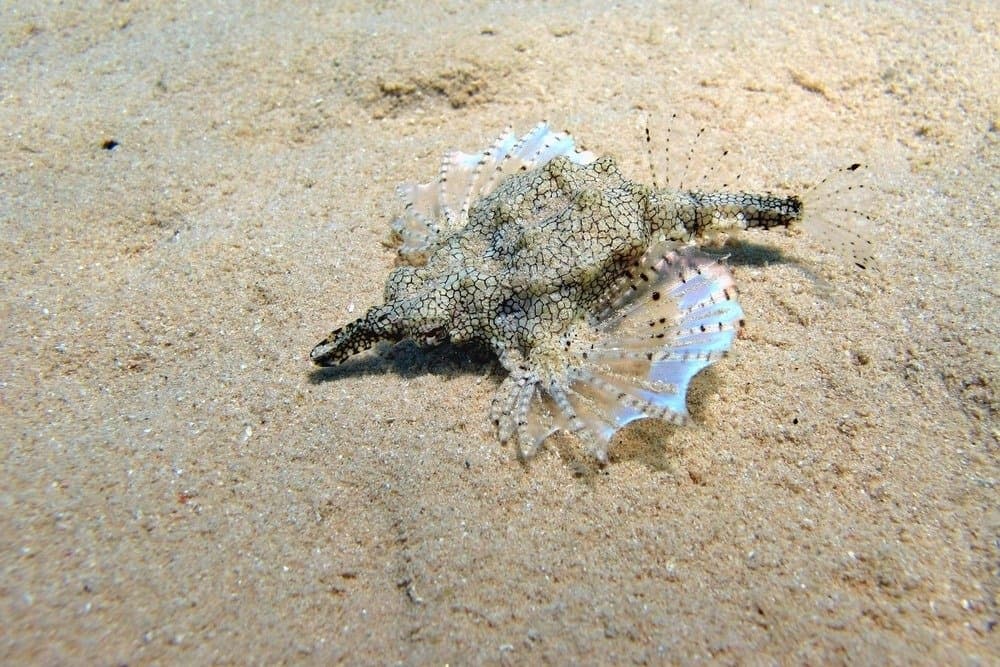
Dragonfish have fewer vertebrae in their spines than most other fish.
©blue-sea.cz/Shutterstock.com
One of the most interesting things about dragonfish is that they have fewer vertebrae in their spine than most other fish. This phenomenon may not seem like a big deal, but it allows them to be much more flexible with their heads, which comes in handy when hunting for food. Because they can turn their heads more efficiently, it aids the hinge quality of their jaws to catch larger prey.
10. Camouflage on the Dark Side
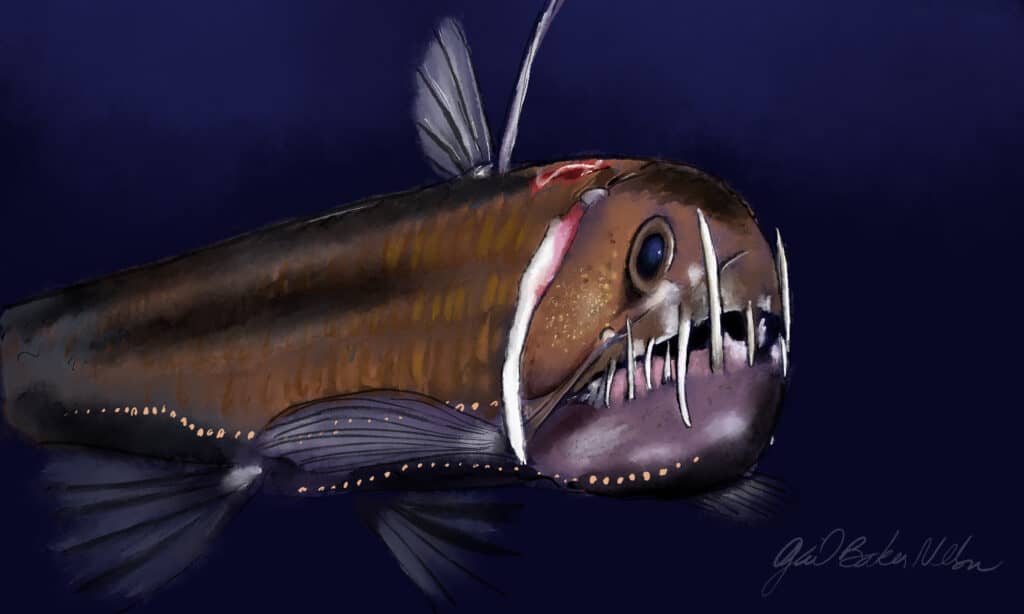
Another astounding characteristic of the barbeled dragonfish is their dark skin. The dragonfish’s skin is adapted to absorb 99.5% of all light that hits it, making them virtually invisible in the water. This camouflage is a bonus to the mesmerizing luring tactic of their illumined barbels, allowing them to be ultimate predators. Dragonfish are truly magnificent creatures, and their unique adaptations make them masters of the deep sea.
The photo featured at the top of this post is © UC San Diego Jacobs School of Engineering / CC BY 2.0 / flickr – License / Original
Sources
- , Available here: https://animaldiversity.org/accounts/Idiacanthus_fasciola/#physical_description
- , Available here: https://www.sciencedaily.com/releases/2004/03/040324071052.htm
- , Available here: https://conservation.reefcause.com/the-incredible-vision-of-dragonfish/
- , Available here: https://www.nature.com/articles/30871
- , Available here: https://link.springer.com/article/10.1007/s00227-014-2406-x
- , Available here: https://link.springer.com/chapter/10.1007/978-0-387-72655-7_23
- , Available here: https://web.archive.org/web/20200711101336id_/https://www.biorxiv.org/content/biorxiv/early/2020/05/27/2020.05.25.114991.full.pdf
- , Available here: https://www.sciencedirect.com/science/article/pii/S2590238519300359
- , Available here: https://onlinelibrary.wiley.com/doi/full/10.1111/evo.12322
- , Available here: https://link.springer.com/article/10.1007/s11051-021-05272-8
- , Available here: https://www.sciencedirect.com/science/article/pii/S096098221101133X
Thank you for reading! Have some feedback for us? Contact the AZ Animals editorial team.






